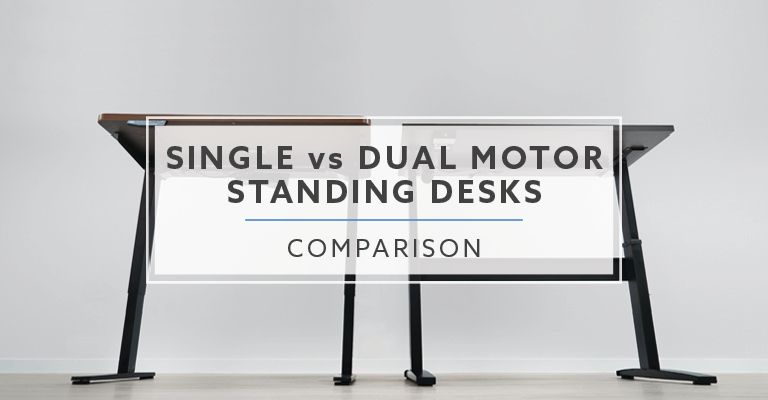If you’re in the market for a two leg standing desk, you’ve probably noticed that there are two different motor configurations for these desks. The first option is a single motor system and the second a dual motor system. Naturally, you have probably wondered what the main differences are.
Surely, two motors have to be better than one, right? The truth, the answer isn’t that simple. For the most part, we really have to look at the motors being used for each desk to better understand the advantages or disadvantages that may exist between desks. In this post we will cover the different things to consider so you better understand if a brand’s single motor or dual motor desk is a better fit for your needs.
Full Disclaimer: We are an office furniture dealer and sell some of the best stand up desks we review. To learn more about the products we sell, our review process and why you can trust us, please visit: Why we’re different. Who is BTOD.com and The Breakroom Blog?
Single Motor vs. Dual Motor Standing Desks Links
- Not All Motors Created Equal
- Strength and Speed Consistency
- Reliability
- Desk Design Differences
- Cost Differences
1. Not All Motors Created Equal
Understanding if a single motor or dual motor standing desk is better isn’t a simple question to answer. There are a lot of variables that are in play and which is better depends on the specific motors that are used. You’ve likely heard the saying that it’s more about quality than quantity. That is also true with motors used in standing desks. While some dual motor desks outperform single motors, this isn’t the case across the board.
2. Strength and Speed Consistency
While most would think two motors should be stronger than a single motor, this isn’t always true. To get a better understanding how a single motor fares against a dual motor, it’s important to look at a couple specs first. These specs are the load capacity (weight capacity) and adjustment speed. Just because a manufacturer lists these specs, doesn’t mean they are always accurate. When we review any electric standing desk, we always check to see how fast a desk moves and the amount of weight it can lift. Since all of the desks we review are lab tested, the results we list for each review are a good place to start.
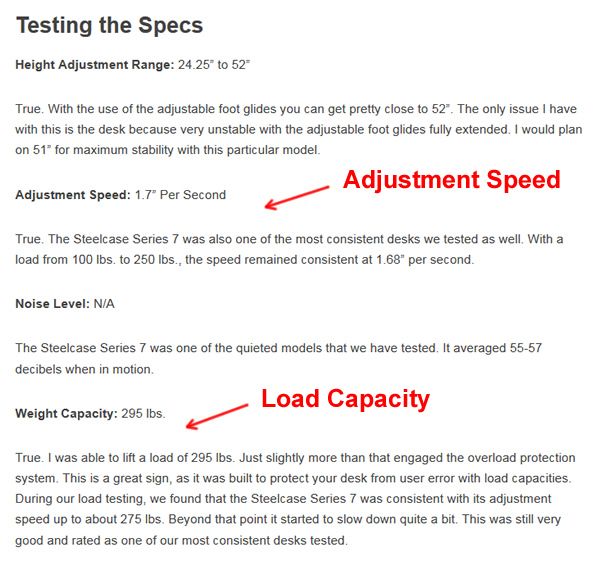
What you will typically find with electric standing desks is there is a certain amount of give and take. What I mean by this is that desks like the dual motor Autonomous Business Edition have a fast adjustment speed. Because they wanted a fast adjustment speed, the closer you get to the max capacity, the slower the desk will move. If there is a large drop off, it generally isn’t a good option for users that plan to put a lot of weight on their desk. This is true for both single and dual motor designs. My personal preference is finding a desk that offers consistency with its adjustment speed as the load is increased.
Single Motor Consistency
Alternatively, we tested the StandDesk Simple with only one motor. This particular product wasn’t of the highest quality and ranked near the bottom of our best of 2024 list. The funny thing about it was that it had no issues lifting 242 lbs. With minimal load on the desk it moved at around 1.06” per second. When we put a max load on the desk at 242 lbs, it was still able to average 1.02” per second. This showed better consistency than some two motors systems we tested.
Our VertDesk v3 features a single motor system from German manufacturer Ketterer. This is the strongest of the all single motor systems we’ve tested to date. The VertDesk v3 has an overload protection system that shuts off the desk when it lifts more than 275lbs. When we tested the desk within a minimal load, it was able to average 1.55” per second. When we loaded it to max capacity of 275 lbs, the speed dropped slightly to 1.35” per second. Because it is our product, we were able to turn off the overload protection. We put 350 lbs on the desk and we were still able to average 1.27” per second. For a single motor, it was still able to keep up with the dual motor JieCang frames (Uplift, EvoDesk, GeekDesk, etc).
Dual Motor Consistency
Not all dual motor systems provide fast speeds or large load capacities. We have tested products like the IKEA Bekant that used dual Bosch motors and they were severely inconsistent. When we tested that desk it had a max capacity of 154 lbs. With a minimal load, the desk was able to move at 1.25” per second. When we loaded it to 150+ lbs, the speed dropped to .33” per second while lowering. This was one of the most odd dual motor desks we have tested.
Of course this doesn’t mean that all two motor systems operate like the Bekant product. When we tested the UpDesk Elements, which features Linak motors, it had no issues lifting loads over 300 lbs. Only when we overloaded the table to 400 lbs did we experience a big drop off in performance from 1.43” per second down to 1.24” per second.
Other dual motor desks, like the Uplift Desk, will feature slower speeds around 1.33” per second. They tend to move at around the same rate, with only a small performance drop off around max capacity. Much like the UpDesk Elements, the Uplift Desk is able to lift more than what is rated on the desk. While we wouldn’t recommend using a desk beyond the recommended load capacity, these types of consistent dual motor desks are probably best suited for it.
What I Like For Consistency
I personally like to see a desk that performs consistently with various amounts of weight on the desk. The Uplift Desk runs at an average of 1.33” per second and remains consistent throughout the loads tested. When a desk only drops from .1” to .3” per second, it is a good sign for consistency. These motors give you optimal adjustment speeds and load capacities. Motors with wider ranges of adjustment speeds, through varying load testing, won’t provide a consistent experience. I also worry about how well they will hold up over time.
3. Reliability
How reliable a motor is likely comes down to the quality of the motor itself. There are plenty of lower quality motors being manufactured for low cost electric standing desks. Through our reviews we have found that many of these have overlapping issues. A lot of these issues are linked to the worm drives and gear systems used. These include over greased worm drives and gears and/or exposed worm drives and gears. Inside the motors, there are also differences on how well the wires are wrapped around the motor core and the quality of the magnets used.

Some brands have attempted to say that two motors are more reliable than one. The problem with this is that an electric standing desk with two motors actually needs both to function properly. If one of the two motors dies, the desk will only go up on one side. So technically speaking, you now have two opportunities for a motor to fail and your desk not to work. This really isn’t meant to scare you; again it all goes back to the quality of the motor. The higher the quality of the motor, the less likely it will be to fail.
The second consideration to make is that most desk manufacturers that use two motors end up using a more compact motor than those who use one. While dual motor desks might be able to evenly displace the weight of a desk amongst each motor, they tend to be less powerful than a larger single motor. Desk manufacturers choose to go with smaller motors because they are almost always designed to hide within the desk frame. Single motor systems that I have seen in the market have one external motor system. This makes it easier for manufacturers to use a larger motor.
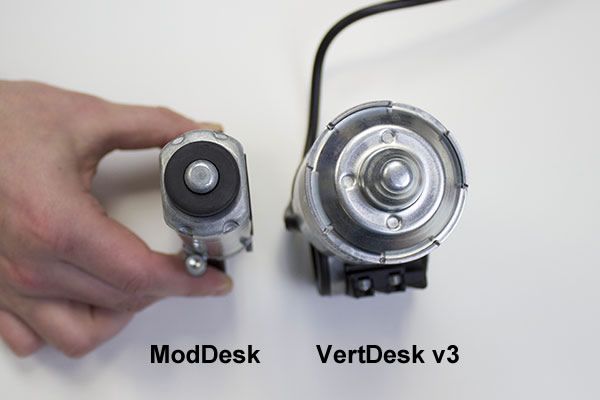
When you consider a desk that has moved past it’s warranty, you have to look at how you can replace parts like the motor. External motors on single motor systems will always be easier for users to replace. Most of these motors were put onto the standing desks during the assembly process. Dual motor desks have their motors internalized and accessing the motors can be more difficult. If the desk is still under warranty, the manufacturer will likely opt to send a replacement leg with the motor preassembled. Ultimately, you hope that your motors don’t fail and you never have to cross this bridge. Because it can happen, we have to address the problem and how would you go about fixing it.

4. Desk Design Differences
When you look at the major design differences from most single motor vs. dual motors, the first thing that stands out is the motor itself. Single motor desk designs always have a motor or a motor cover that is visible. Because two leg desk designs share the motor, they will each use a hex rod driven system to move each of the legs simultaneously.
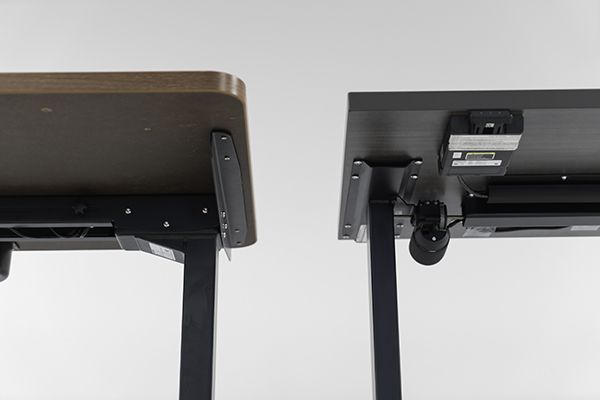
Dual motor systems are generally smaller and since they drive the individual motor, they are able to better hide the motors. The most common way of doing this is inside a rectangular motor box that you find at the top of the columns. This will provide a more finished look than the exposed single motor design. Some products like the XDesk Terra use Linaks new DL4S column and inline motor design. These create a more seamless look and improve the appearance of a motor less desk.
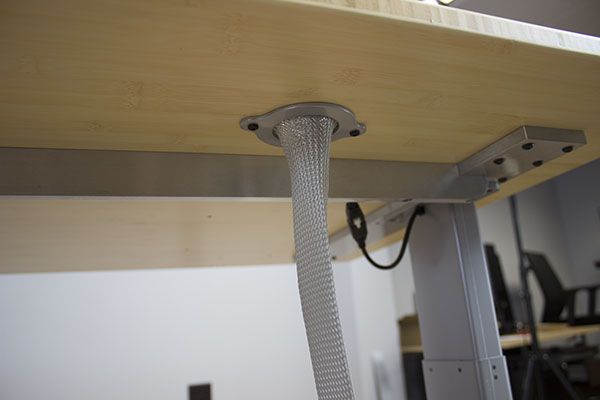
Because the single motor design uses a hex rod, assembly of these types of desks can require a bit more work than a dual motor design. Inserting the hex rod into the first leg is typically easy, but the second leg is where users can run into a snag. Because a hex rod is used, the female portion of the gear must align perfect to the male hex rod. If they do not, you can find yourself fidgeting to get these parts aligned. If you don’t get the legs aligned at the same heights, you can find yourself with an uneven desk. Because the hex rod is generally off by only a small amount, we recommend using an adjustable wrench to slightly turn/twist the rod. It doesn’t take much to get them to slide into place. For our VertDesk v3, we’ve started including a hex rod assembly tool. It is a precut wrench made to fix the hex rod perfectly.
5. Cost Differences
One of the biggest reasons that manufacturers decide to go with single vs dual motor setups is the cost associated with each. The cost of the motors is again linked to the quality of the motor. There are single motor designs, like the one on our VertDesk v3, that use a German Ketterer brand. This single motor will cost more than a lot of dual motor Chinese made alternatives. It’s important to keep this perspective when comparing brands.
For us, we wanted to use a high quality motor, that offers good load and speed consistency. It was also important that we use a brand known for producing high quality gear components. Since all of these motors will utilize some type of gearing system, having high precision gear components improves the efficiency of the motor. This creates a system that requires less effort to move the desk, which in turn, improves the lifespan of the motor and gears.
Bottom Line
The bottom line with the single motor and dual motor comparison; like most things it’s more about quality than quantity. Most high quality dual motor setups will outperform single motor alternatives. These will almost always come with a higher price tag too. Which motor setup is best for you will come down to your specific adjustment speed and load capacity requirements. Of course this will also tie into you budget, which is the ultimate influencer of all.


